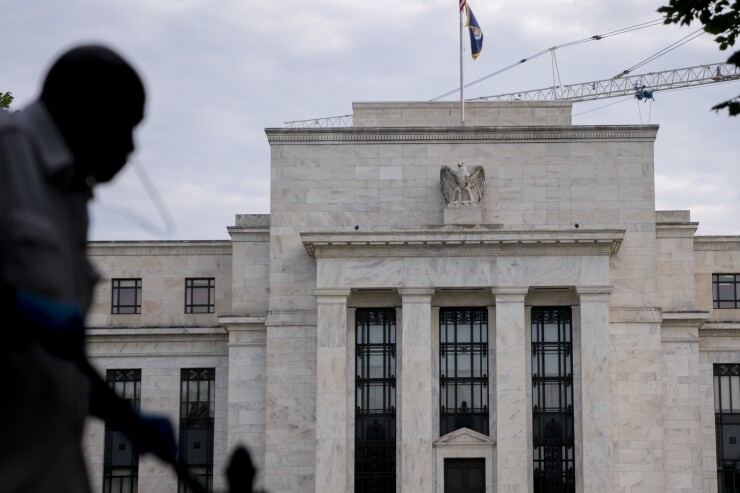
(Bloomberg) — U.S. bank lending contracted by the most on record in the last two weeks of March, indicating a tightening of credit conditions in the wake of several high-profile bank collapses that risks damaging the economy.
Commercial bank lending dropped nearly $105 billion in the two weeks ended March 29, the most in Federal Reserve data back to 1973. The more than $45 billion decrease in the latest week was primarily due to a a drop in loans by small banks.
The pullback in total lending in the last half of March was broad and included fewer real estate loans, as well as commercial and industrial loans. Friday's report also showed commercial bank deposits dropped $64.7 billion in the latest week, marking the 10th-straight decrease that mainly reflected a decline at large firms.
The slide in lending follows the collapse of several firms, including Silicon Valley Bank and Signature Bank.
Economists are closely monitoring the Fed's so-called H.8 report, which provides an estimated weekly aggregate balance sheet for all commercial banks in the U.S., to gauge credit conditions. The recent bank failures have complicated the central bank's efforts to reduce inflation without sending the economy into a recession.
On Thursday, the American Bankers Association index of
The banking crisis has made a recession more likely, according to JPMorgan Chase & Co.'s Jamie Dimon. The bank's chief executive officer said in an annual letter that the failures have "provoked lots of jitters in the market and will clearly cause some tightening of financial conditions as banks and other lenders become more conservative."
The Fed's report showed that by bank size, lending decreased $23.5 billion at the 25 largest domestically chartered banks in the latest two weeks, and plunged $73.6 billion at smaller commercial banks over the same period. Lending by foreign institutions in the US fell $7.5 billion.
The biggest 25 domestic banks account for almost three-fifths of lending, although in some key areas — including commercial real estate — smaller banks are the most important providers of credit.
In a note on the report, the Fed said domestically chartered banks made divestments to nonbank institutions that affected $60 billion in loans in the week ended March 22, meaning those loans are no longer held by commercial lenders.
Meanwhile, so-called "other" deposits, which exclude large time deposits, have fallen $260.8 billion at commercial banks since the week ended March 15. At domestically chartered banks, they declined $236 billion, mostly reflecting a drop at the 25 largest institutions. Deposits at small banks fell $58.1 billion.
Commercial and industrial lending — considered a closely followed gauge of economic activity — fell $68 billion. Commercial real estate loans dropped $35.3 billion. Total assets, which includes vault cash, as well as balances due from depository institutions and the Fed, decreased nearly $220 billion, while total liabilities declined more than $188 billion.






